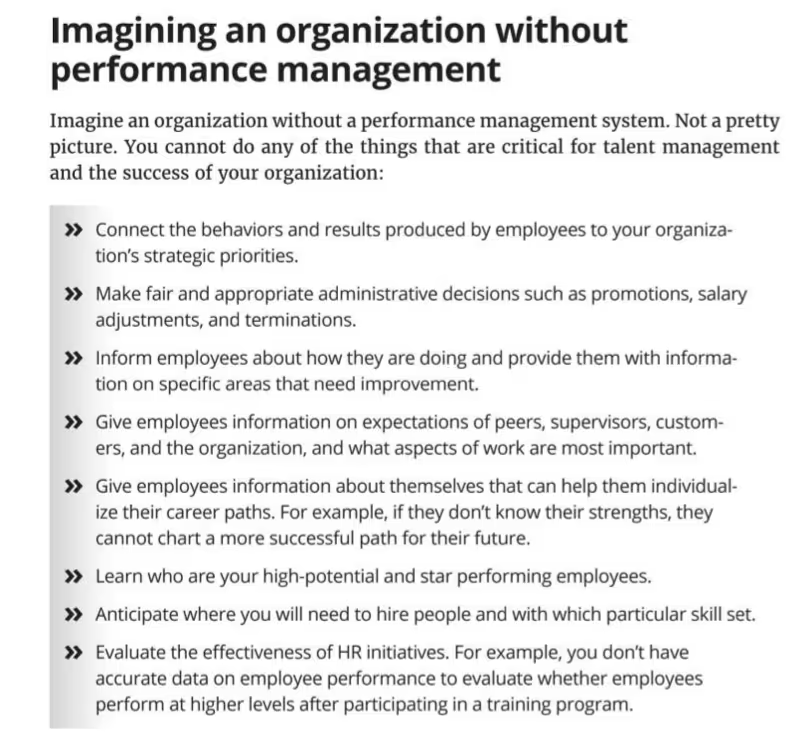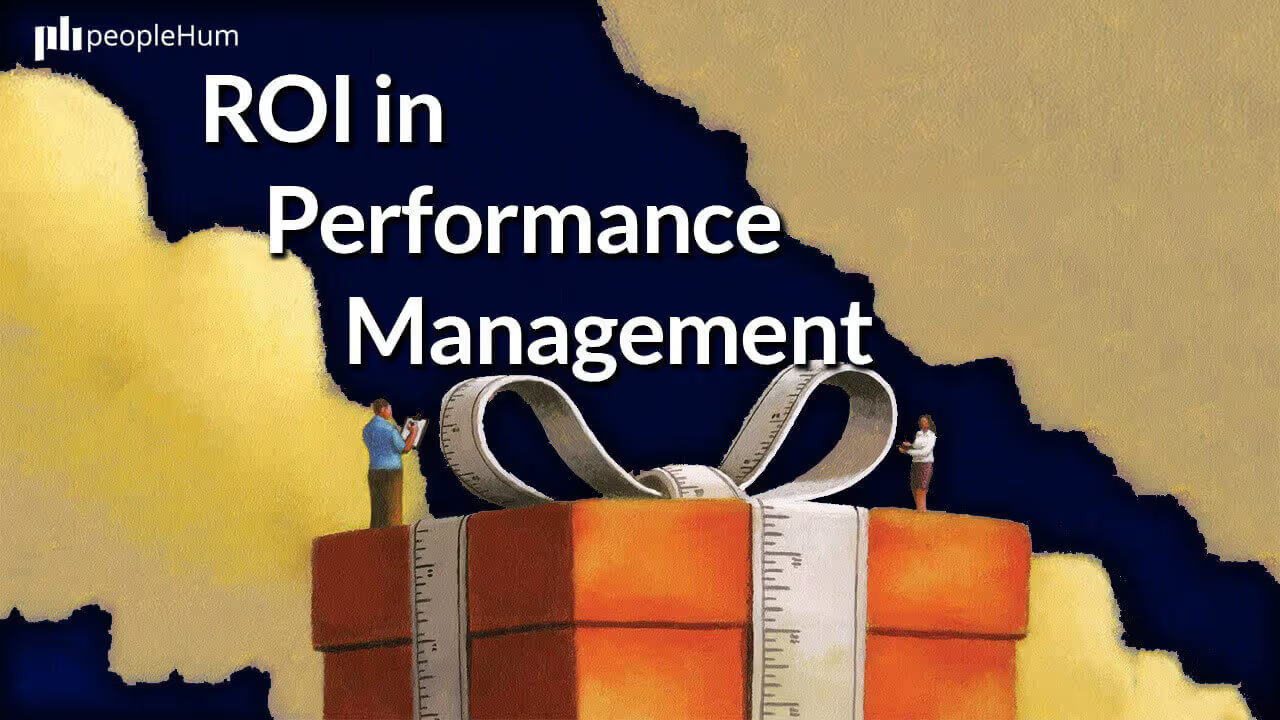Around 10 years ago the virtue of performance management arose in response to the often asked questions in many organisations: "How are we doing so far? Are we putting our money into the proper projects? What is the state of our cash flow?".. These seemingly benign questions speak to the very heart of an organisation and, in essence, form the foundation of performance management.
The rationale behind measuring the ROI of performance management system is simple: Your organisation is given some resources. It is now expected to turn those resources into profit. This profit could be in the form of, for example, productivity gains or increased revenue.
“Return on investment is a way of approaching the problem of top-level control rather than a magic formula for solving these problems.” - William T. Jerome
5 Main Return of Investments (ROI) of Performance Management

1. Keeps employees engaged
“90% of businesses that have adopted a new approach to performance management say it has increased engagement”(Source: Deloitte)
Employee engagement has become a critical return of investment of performance management. Customer happiness, productivity, and profitability are all increased by highly engaged employees - while attrition and absenteeism are brought down in great numbers. Let’s do some math to understand the link between employee engagement and company success.
The Achievers data stated that only 21% of employees are engaged at work. Now let’s suppose your startup employs around 250 people. If you apply this fact to the 250 employees, we conclude that around 198 of those 250 are disengaged at work.
Next step is counting average salary of these employees which is say about $47,000. This means employee engagement is costing you $47,000 x 198 employees. To make this sound more real, that’s actually $3,164, 040 per month. Engaged employees rise in direct proportion to regular performance reviews and adequate manager follow-up. This is why an important ROI of performance management stands out as increased employee engagement.
2. Shrinks turnover, aids retention
“There are 14.9% lower turnover rates in companies that implement regular employee feedback."(Source: OfficeVibe)
Gallup says the average cost of replacing an employee is anywhere between 1.5 to 2x the employee’s salary. “So, a 100-person organization that provides an average of $50,000 could have turnover and replacement costs of approximately $660,000 to $2.6M per year,” it read.
There are two possible questions employees might ask themselves in order to stay longer in a company. One, “Am I doing things that seem to lack value or purpose?” Second and the most important, “Do I get a balance of positive and negative feedback?”
Company leaders must be willing to accept critiques with humility to foster a feedback culture of openness and support. If your HRIS wasn't built for performance management, you'll be amazed at the employee loyalty a firm creates when it's willing to accept bad feedback and act on it. This sets the tone for a noteworthy ROI of performance management.
3. Delivers company-wide information and benefits
Companies adopting continuous performance feedback significantly outperformed competition at a 24% higher rate (Betterworks, 2020)
One among the many benefits of performance management is that - it stands out as an important communication tool. One, it keeps employees informed about their performance and provides them with information on particular areas where they may improve. Two, they offer information on peers', supervisors', customers', and the organization's expectations - as well as what elements of work are most important, which is related to the strategic goals.
“The team members of managers who provide weekly feedback instead of annual are 5.2 times more likely to strongly agree that they receive meaningful feedback” (Gallup)
Must read: 20 Questions You Should be Asking in 360-Degree Performance Reviews
The elements of effective performance management can also provide data for making administrative decisions concerning personnel. Salary modifications, promotions, acknowledgement of high individual performance, identification of bad performers, and layoffs are just other benefits of performance management.
4. Saves time & cost if done rightly
Gallup revealed that traditional performance reviews to measure performance management can cost large organizations between $2.4M and $30 million per 10,000 employees. This is partly attributable to the annual review's direct expenditures. But it also stems from the large number of HR hours necessary to execute it and process the data appropriately.
Managers spend around 210 hours a year on performance management, and employees spend 40 hours per year. Reduced time and cost becomes a ROI of performance management if carried out effectively. Al in performance management gives this a further push.
Advantages of performance management easily come to surface after choosing a performance management system with the help of which:
- Employees take half as long to complete their self-evaluations.
- Employee reviews take 80 percent less time for managers to complete.
- HR spends 90% less time handling the performance evaluation process than other departments
5. Measurable Output
In the boardroom or during all-hands meetings, each company department has a set of key performance indicators (KPIs) to present. However, despite business executives' efforts to evaluate everything, organisations frequently underperform in one crucial area: employee performance.
The value of being able to report on performance is not to point fingers; rather, it is to determine whether tasks should be redistributed or extra coaching is required.
Another important advantage of data-driven performance management has been mentioned by experts. "Gut feeling" and unconscious bias are less important factors in hiring decisions when managers approach reviews more methodically. "Employees will value the openness and impartiality that frequent ratings provide."
How to calculate basic ROI of performance management?
While measuring the ROI of performance management system, divide the organization's net revenue after deducting expenditures on the review cycle – by the cost of salaries and benefits provided.
Simply put, to determine a performance cycle’s return on investment - first determine the cycle’s value, then divide it by the cycle’s implementation costs inorder to properly measure performance management.
For instance, if performance reviews for remote employees saw increase in productivity and engagement, measure the productivity gains via engagement metrics and divide that by the total amount of costs required to conduct the review cycle in the first place.
Human resource professionals can also conduct an analysis of group of employees that underwent the review cycle versus the groups that did not, to get an idea of the ROI of performance management. Performance is evaluated quarterly by comparing actual return on investment with the ROI objective and by analyzing the difference.
Also read: Top 6 mistakes managers make during 1-on-1 meetings
About peopleHum
A performance management system is much more than just converting paper-based appraisal to digital formats. peopleHum is one such solution that enables supervisors & peers to provide continuous & real-time performance evaluations, and employees to get ongoing and real-time feedback.
Using our performance management solution, firms like yours can change goals and priorities in real time and convey them to all employees, allowing them to adjust team and individual goals and priorities as well. So, in a matter of seconds, the cascade of decisions from the company to its departments, and then to individual employees, may be successfully accomplished among thousands of employees.
Our system allows managers to better understand their roles in the process and can easily determine, for example, how frequently they communicate with direct reports about their performance.
To get a live view of how peopleHum works, book a free demo of our platform. Let our team handle all your queries and concerns. You can also reach out to us on WhatsApp or send an email at connect@peoplehum.com
FAQs
1. What is the ROI of performance management?
It refers to the measurable value an organization gains from investing in structured performance management practices, such as increased productivity, retention, and employee engagement.
2. How do you measure the ROI of performance management?
Key metrics include improvements in employee productivity, goal achievement rates, lower turnover costs, higher engagement scores, and leadership development outcomes.
3. Why is performance management important for business success?
Effective performance management aligns individual efforts with company goals, fosters continuous improvement, boosts employee motivation, and ultimately drives profitability.



































.png)
.png)
.avif)












